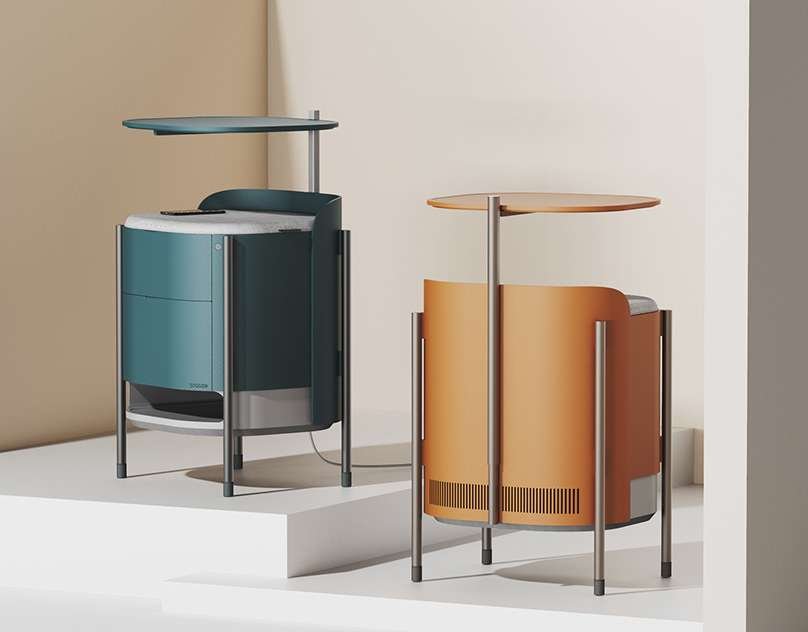Chanel and Architecture A Century of Quiet Influence
When we think of Chanel, what often comes to mind are timeless silhouettes, tweed jackets, or the legendary No.5 fragrance. But beyond fashion and scent lies a quieter yet equally powerful side of the brand its deep connection to architecture.
As Chanel celebrated its 100th anniversary, it didn’t just mark the occasion with runway shows or glossy campaigns. Instead, it chose a more layered, cultural approach one that brought together past and present through art, dance, and space. And nowhere was this clearer than in the re-staging of Le Train Bleu at London’s V&A East Storehouse not just a building, but a bold architectural project that reimagines how museums can exist in the modern world.
An Unexpected Meeting: Chanel, Picasso, and Ballet
The ballet itself wasn’t new. Back in 1924, Gabrielle Coco Chanel designed the costumes for Le Train Bleu , created by the Ballets Russes with a stage curtain painted by Pablo Picasso . A century later, we were once again drawn into that same story only this time, it unfolded inside a building that itself bridges eras.
Choosing the V&A East Storehouse wasn’t random. The space is more than just storage for museum pieces; it’s a hub for research, workshops, and interactive exhibitions. And with Picasso’s original curtain housed within its walls, the venue became a living bridge between generations between fashion design and architectural vision.

Chanel Doesn’t Just Build Stores It Builds Ideas
Chanel’s relationship with architecture goes far beyond events. Over the years, the brand has collaborated with some of the most respected names in architecture to create spaces that reflect its identity without overshadowing their own character.
| Project | Description |
|---|---|
| CHANEL Nexus Hall – Tokyo | Designed by Japanese architectKengo Kuma, this interactive cultural space blends tradition and technology in a minimalist setting. |
| Mobile Art Pavilion – Global Tour | A traveling exhibition space designed byZaha Hadid, inspired by Chanel’s signature style. |
| Chanel Flagship – Dubai | An elegant interior byPeter Marino, where long, flowing lines echo the spirit of Chanel’s fashion. |
These aren’t just shops or galleries they’re physical expressions of Chanel’s philosophy: simplicity that hides complexity, elegance that speaks quietly, and attention to detail that makes all the difference.

What Can Architecture Learn from Chanel?
At first glance, fashion and architecture might seem worlds apart. But the truth is, they share a lot in common. Both are about form and function, about how people interact with space whether that space is made of fabric or concrete.
- Simplicity isn’t simple : Like modern architecture, Chanel’s designs look effortless but behind them lies careful thought and craftsmanship.
- Tradition can be modern : Reinterpreting old ideas in new ways is something architects do all the time just as Chanel did by bringing Le Train Bleu back to life.
- Human experience comes first : Whether you’re walking into a Chanel boutique or wearing one of its creations, the feeling matters most.
Architecture You Don’t See But Feel
Chanel may never call itself an architecture firm, but in many ways, it builds culture. It shapes experiences, creates atmospheres, and redefines what luxury means not just in clothes, but in space and memory.
Over a hundred years, Chanel has done more than follow trends it has shaped lifestyles. And maybe that’s the real secret to its lasting power: understanding that beauty isn’t just about how something looks, but how it makes you feel in time, and in place.

✦ ArchUp Editorial Insight
This article explores Chanel’s centenary celebration through a curated architectural lens, focusing on the re staging of Le Train Bleu at V&A East Storehouse. The visuals emphasize spatial storytelling, with rich textures and layered lighting that reflect the brand’s cultural depth. While the narrative effectively bridges fashion and architecture, it lacks a deeper discussion on how such collaborations influence contemporary design practices. Nevertheless, the integration of historical context within modern spatial experiences offers a compelling case for heritage-driven architectural curation.
ArchUp: A Live Chronicle of the Arab and Global Architectural Scene
Since its launch, ArchUp has aimed to build an open knowledge archive covering everything related to architecture, design, and urbanism in the Arab world and beyond. We strive to provide neutral, encyclopedic content written in a professional tone, aimed at every architect, researcher, student, or decision-maker.
The content is managed by a dedicated editorial team that ensures daily review and updates of news, articles, and design data. We invite you to reach out via our Contact Us page to contribute, suggest, or collaborate in expanding the architectural knowledge network we are building together.




